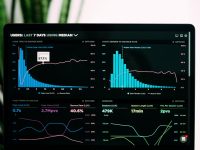In today’s hyper-connected world, marketing campaigns need to be both dynamic and measurable. QR codes have become a powerful tool to bridge the offline and online worlds, letting users instantly access digital content. However, just placing a QR code on a flyer or brochure isn’t enough. To truly measure the effectiveness of your efforts, you need to track them—and that’s where UTM parameters come into play.
What Are UTM Parameters?
UTM stands for Urchin Tracking Module. These are tags added to the end of a URL to provide data that helps marketers track the performance of campaigns in web analytics tools such as Google Analytics.
When someone scans your QR code and visits your website, the UTM parameters allow you to see how they got there. This way, you know which campaign, QR placement, and even print material drove the traffic.
Why Combine QR Codes with UTM Tags?
By combining QR codes with UTM links, you gain insights into:
- Which location or device scanned the QR code
- How well different materials (flyers, posters, packaging) are converting
- User behavior after scanning the code
This data is invaluable for refining future marketing strategies and increasing ROI.
Step-by-Step Guide to Tracking QR Code Campaigns Using UTM Links
Step 1: Define Your Campaign Elements
Before creating your link, think about the specific campaign you’re working on. You’ll want to define three key UTM parameters:
- utm_source: Where the traffic is coming from. For QR codes, you might use print or poster.
- utm_medium: The type of marketing medium. For example: qr_code
- utm_campaign: The name of your campaign, such as spring_sale
You can also use optional parameters like utm_content to differentiate between different designs or placements of the code.
Step 2: Build Your UTM-Tagged URL
Use a free tool like Google’s Campaign URL Builder to add UTM parameters to your base URL.
For example:
www.yoursite.com/product?utm_source=flyer&utm_medium=qr_code&utm_campaign=summer_promo
Step 3: Shorten the URL (Optional)
Long URLs can make QR codes bulky and harder to scan cleanly. Consider shortening the link using services like Bitly, TinyURL, or your own branded short domain.
This not only improves scan reliability but also makes the QR code aesthetically cleaner for marketing materials.
Step 4: Generate Your QR Code
Once you have your UTM-tracked (and optionally shortened) URL, use a QR code generator such as:
Paste the URL into the generator, customize your QR code with brand colors or logos if needed, and download the final image.

Step 5: Place the QR Code Strategically
Ensure your QR code is placed in areas where it’s visible and easy to scan. Consider lighting, size, and context. Avoid placing it on curved surfaces or cluttered backgrounds.
Examples of good placements include:
- Storefronts
- Product packaging
- Printed flyers
- Event banners
Step 6: Monitor with Analytics Tools
Once your campaign is live, monitor performance through platforms like Google Analytics. Navigate to Acquisition > Campaigns > All Campaigns to see which QR scans led to traffic and conversions.
Best Practices for Success
- Test Before Launch: Scan your QR code on multiple devices to ensure it functions correctly.
- Provide Value: Make sure the landing page offers something compelling—don’t just link to your homepage.
- Use Dynamic QR Codes: These allow you to update the URL later, which is useful for correcting errors or optimizing content.
- Track and Learn: Use the data to determine what’s working and what needs improvement for future campaigns
Wrapping Up
Integrating UTM parameters with your QR code campaigns gives you powerful insights that can shape the success of your marketing strategies. Not only does it let you track performance and ROI, but it also helps you build smarter, more effective campaigns. Start incorporating UTM-tagged QR codes today—and don’t let important data slip through the cracks.



Leave a Reply